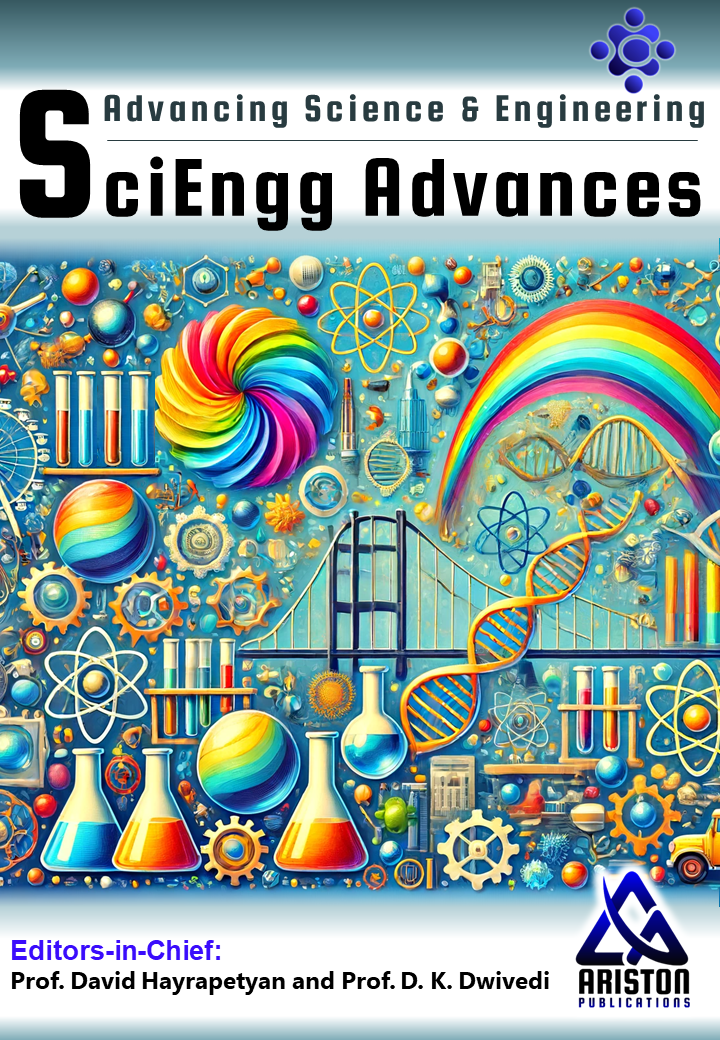Satyendra Nath Tiwari, Mrityunjay Mishra, Om Prakash Yadav
Department of Physics, K. S. Saket Post Graduate College, Dr. Rammanohar Lohia Avadh University, Ayodhya- 224123, Uttar Pradesh, India
*Author to whom correspondence should be addressed:
drsntiwari.physics@gmail.com (Satyendra Nath Tiwari)
ABSTRACT
This manuscript presents a comprehensive simulation study of Darlington Pair amplifiers and coupled Darlington amplifier configurations, focusing on their performance in analog and digital applications. The analysis includes key parameters such as voltage gain, current gain, frequency response, bandwidth, and power dissipation for both single-stage and two-stage Darlington amplifiers. The study demonstrates that the proposed two-stage coupled Darlington amplifier significantly enhances voltage gain, making it suitable for amplifying small signals in the millivolt range, which is critical for communication and signal processing applications. The simulation results reveal that the two-stage coupled Darlington amplifier achieves a maximum voltage gain of 200.58, representing a 1081.27% improvement over the single-stage configuration, albeit with a 31.23% reduction in bandwidth (68.08 kHz compared to 99 kHz). Additionally, the current gain of the two-stage amplifier exceeds theoretical expectations, suggesting a trade-off between voltage and current amplification. The study also investigates the impact of biasing parameters, including supply voltage (VCC), load resistance (RL), emitter resistance (RE), and collector resistance (RC), on amplifier performance. Findings indicate that voltage gain saturates at higher resistance values, while bandwidth exhibits distinct trends with varying supply voltages. Furthermore, the input-output waveform analysis confirms the amplifiers’ ability to maintain sinusoidal signal integrity, reinforcing their utility in low-voltage amplification. The total power dissipation for the single-stage and two-stage configurations is measured at 7.13 mW and 14.3 mW, respectively. This research provides valuable insights into optimizing Darlington-based amplifiers for high-gain, low-signal applications while addressing inherent limitations such as frequency response degradation in multi-stage designs.

Significance of the Study
This study is significant for advancing high-gain, small-signal amplification in communication and analog electronics. By analyzing single and two-stage Darlington amplifiers, it highlights a 1081% voltage gain improvement in the coupled configuration, crucial for millivolt-range signals. However, the trade-off between gain and bandwidth (31% reduction) provides key insights for optimizing multi-stage designs. The findings aid engineers in balancing performance parameters like power dissipation (14.3 mW vs. 7.13 mW) and frequency response, enabling better amplifier design for low-voltage applications.
Summary of the Study
This research simulates Darlington pair and coupled Darlington amplifiers, comparing gain, bandwidth, and power dissipation. The two-stage design achieves a 200.58 voltage gain (1081% higher than single-stage) but reduces bandwidth to 68.08 kHz. Current gain exceeds theoretical values, suggesting a voltage-current trade-off. Biasing analysis reveals saturation in gain at higher resistances. Both amplifiers maintain signal integrity with 14.3 mW power dissipation in the two-stage model. The study aids in optimizing high-gain amplifiers for communication systems despite bandwidth limitations.
